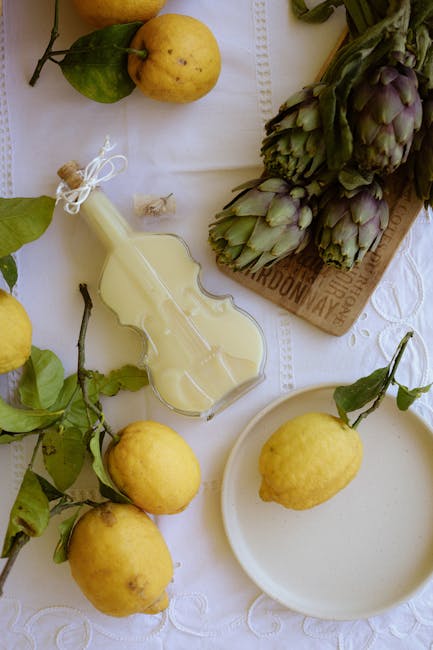Lemon Curd vs. Lemon Pie Filling: What’s the Real Difference?
Ever been in a baking frenzy, staring at a recipe calling for “lemon something” and wondering, “Is lemon curd the same as lemon pie filling?” You’re not alone! While both are delightfully lemony and can add a bright, tangy kick to desserts, they have distinct differences that can impact your baking results. Let’s dive into the delicious details to understand what sets these two lemon treats apart.
<!– 
Understanding the Core Ingredients
The magic behind both lemon curd and lemon pie filling lies in their key ingredients, but the ratios and preparation methods create significantly different outcomes.
<!– 
Lemon Curd: The Rich and Tangy Spread
Lemon curd is all about richness and intense lemon flavor. It typically includes:
- Lemon Juice: The star of the show, providing the zesty tang.
- Lemon Zest: Adds extra lemon aroma and flavor depth.
- Sugar: Balances the acidity and creates sweetness.
- Eggs: Provide richness, thickening, and that signature velvety texture.
- Butter: Contributes to the smooth, luxurious mouthfeel. This is the key differentiator!
Lemon curd is cooked gently, usually over a double boiler, to avoid scrambling the eggs. The result is a smooth, glossy, and intensely flavored spread.
<!– 
Lemon Pie Filling: A Sturdier Structure
Lemon pie filling aims for a sturdier consistency to hold its shape within a pie crust. Common ingredients include:
- Lemon Juice: Just like in lemon curd, it’s essential for that lemon punch.
- Lemon Zest: Adds a fragrant zest.
- Sugar: Provides sweetness and balances the acidity.
- Eggs (or Egg Yolks): Contribute to richness and thickening.
- Cornstarch (or Flour): The key ingredient that provides the structure and prevents the filling from being too runny. Butter is typically absent or used in minimal quantity.
- Water (or Milk): Helps to create the desired consistency.
Lemon pie filling is typically cooked on the stovetop, allowing the cornstarch to gelatinize and create a thick, stable filling. You can find more information on pie fillings from reputable sources like King Arthur Baking.
<!– 
Key Differences: Texture, Flavor, and Usage
<!– 
Texture: Smoothness vs. Stability
- Lemon Curd: Silky smooth, creamy, and spreadable. Its texture is derived from the butter and eggs.
- Lemon Pie Filling: Thicker and more stable due to the starch, providing a firm filling that holds its shape well in a pie.
Flavor: Intensity vs. Balanced Sweetness
- Lemon Curd: Intense lemon flavor with a rich, buttery undertone. It’s often more tangy.
- Lemon Pie Filling: Balanced sweetness and lemon flavor, often slightly less intense than lemon curd.
Usage: Versatility vs. Specific Application
- Lemon Curd:
- Spread on toast, scones, or muffins.
- Used as a filling for cakes, tarts, and pastries.
- Topping for yogurt or ice cream.
- Enjoyed straight from the jar (we won’t judge!).
- Lemon Pie Filling:
- Primarily used as the filling for lemon pies.
- Can be used in bars and other baked goods requiring a firm lemon filling.
When to Use Lemon Curd vs. Lemon Pie Filling
Choosing between lemon curd and lemon pie filling depends on the desired outcome and the recipe’s requirements.
- Use Lemon Curd when: You want a rich, intense lemon flavor and a smooth, spreadable texture. Think delicate pastries, breakfast treats, or creamy toppings.
- Use Lemon Pie Filling when: You need a stable, structured filling that can hold its shape in a pie or other baked goods requiring a firm texture.
<!– 
Conclusion: Choosing the Right Lemon Delight
So, are lemon curd and lemon pie filling the same? Definitely not! While they share core ingredients and a love for lemon, their distinct textures, flavors, and intended uses make them unique. Now that you understand the differences, you can confidently choose the right lemon delight for your next baking adventure. Happy baking!
